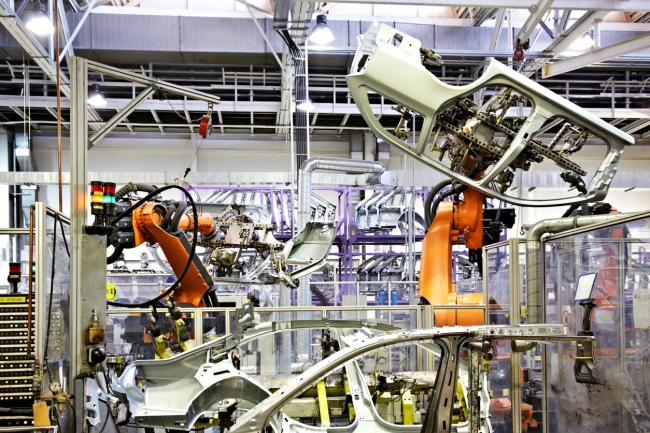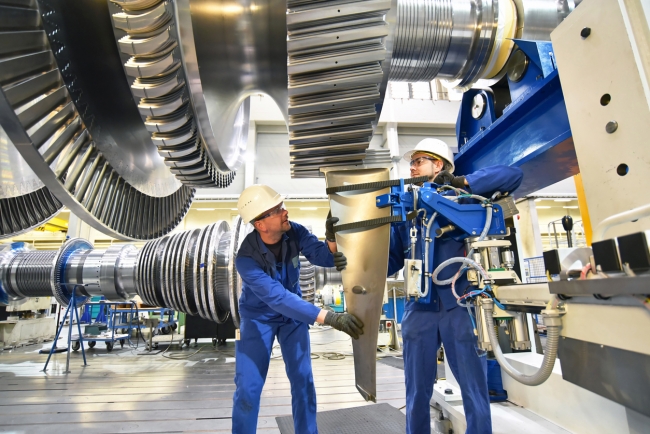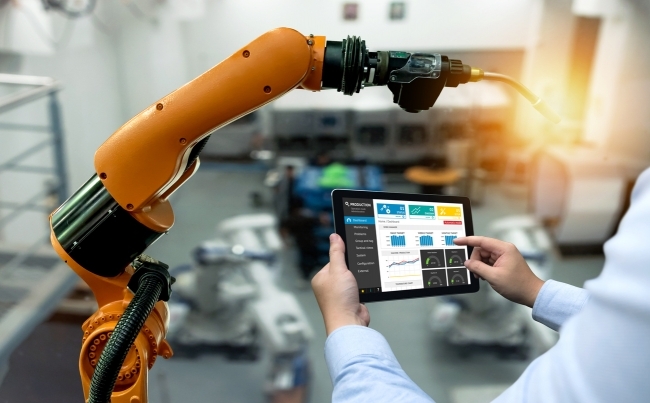4 minute read
Five steps to preparing for the future in the manufacturing sector
The manufacturing sector currently contributes £6.7 trillion to the global economy. Despite being subject to regular negative reports, the UK continues to play a significant role in the evolution and growth of global manufacturing. Andy Coussins from Epicor looks at five steps that manufacturers can take in order to drive business growth and stay ahead of the competition.
The Office for National Statistics claims that UK manufacturing has increased by 1.4% every year since 1948 – a growth attributed in part to upskilled workforces, along with advancements in automation and technology. In addition, the CBI reports that UK factory output is growing at its fastest pace since December, and a third of manufacturers are reporting above-normal order books.

In order to remain successful, manufacturers must prepare for their future within the global manufacturing landscape / Picture: Getty/iStock
It’s clear that the forecast is looking bright for the industry, presenting British businesses with opportunities to take advantage of this upward trend. However, continued growth cannot be assumed—particularly in the current political climate, where there are as many challenges to overcome as opportunities to benefit from. In order to remain successful and ensure the UK becomes one of the top five industrial nations in the world, manufacturers must prepare for their future within the global manufacturing landscape.
1 – Upskilling current workforces
Research has found that the industrial workforce is getting older, and that just under a quarter (23%) of businesses are currently able to attract recruits with the right knowledge. With over half the industry’s workforce aged over 35, and a third aged over 40, businesses in manufacturing are facing a dangerous skills gap on their factory floors. Smart organisations should consider turning to their current workforce and investigating the transferable talent and skills it holds. An agile and skilled workforce that can take on new technologies will equip businesses to embrace the opportunities, and also face the challenges, of Industry 4.0.
Businesses can work to do this by identifying where the upskilling needs to happen and then aligning the training to the overarching business strategy. Technology can play a key role in this, with software such as enterprise resource planning (ERP) delivering actional insights, on a company-wide scale, that businesses can then use to identify potential training opportunities.
2 – Creating additional revenue streams
In order to hold on to their competitive advantage, manufacturers must differentiate themselves by offering something more. For manufacturers, servitization is the process of developing capabilities to provide services and solutions that supplement traditional product offerings, and provide additional revenue streams. Manufacturers could turn to servitization and provide service and product combinations that are tailored to individual customer requirements––to allow a new lease of life for manufacturers, and help set them on course for future business growth. With an advanced service offering, the customer receives an outcome, or capability, rather than simply purchasing a product.
For example, an office manager might sign up for the provision of ‘document management solutions’ rather than buying a photocopier. Similarly, an airline might enter into an agreement for a number of flying hours rather than ordering a jet engine. In northern Europe, consumers have already been offered a ‘pay per wash’ option as part of a trial run by their domestic washing machine manufacturer.

Smart organisations should consider turning to their current workforce and investigating the transferable talent and skills it holds / Picture: Getty/iStock
3 – Harnessing the powers of smart and IoT technologies
The Annual Manufacturing Report 2018 from Hennik Research showed that manufacturers have accepted that the future of (successful) manufacturing lies in the adoption of advanced—largely digital—technologies. Artificial intelligence (AI), automated technology and even robots are fast becoming a common feature among businesses experiencing accelerated growth. These new technologies are being adopted and are streamlining business processes. This is leading to an increase in not only productivity, but also accuracy—and overall business performance.
New technologies are also available to increase visibility across the supply chain. A key challenge that faces the manufacturing industry is how to achieve supply chain transparency while still remaining efficient, and enabling growth. Many businesses are turning to Blockchain as another promising technology to solve this. Blockchain can not only increase visibility throughout the supply chain, but also decrease administrative costs, and improve traceability.
4 – Attracting new people into the industry
Epicor research highlighted that many businesses in manufacturing believe they are perceived as being old-fashioned (23%), and a quarter (25%) agree they are not seen as working within a ‘young person’s industry’. It’s time these perceptions changed. Talking more widely about the use of robotics on the production line, and the use of AI in bringing new products to market quickly can only help to get industrial businesses noticed by young people—thereby encouraging more talent into the market.
The same research revealed that 41% of young people want to work with the latest innovations, and 20% of businesses believe that the chance to work with robotics, as well as AI, is a big draw for young talent. In addition, a third (33%) of millennials want to be at the cutting edge of new developments. These results indicate that businesses who invest in, and promote their use of, new technology innovations will boost workforce ranks, bring real recruitment benefits, and improve business efficiencies.

New technologies are being adopted, leading to an increase in productivity, accuracy and overall business performance / Picture: Getty/iStock
5 – Investing in modern ERP systems
The implementation of new technology and fresh talent will only get the industry so far. Manufacturers must also have a robust and modern ERP system in place in order to manage new processes, and enable seamless cross-department communication. This, along with the addition of increased data processing efficiencies, and valuable real-time and data-driven insights, will allow manufacturers to navigate the ever-changing economic and international business environment, improve productivity and more easily drive future business growth.
The forecast for the manufacturing industry is looking bright—the UK is currently the world’s eighth largest industrial nation, according to EEF and Santander, and is tipped to make it into the top five within the next three years. However, the UK’s position in the global league tables will be determined by the country’s industrial and manufacturing firms, which must weed out operational inefficiencies and take advantage of new technologies in order to grow. It will be companies that put the correct software in place that will be fit for future growth, as the manufacturing sector continues to boom.
